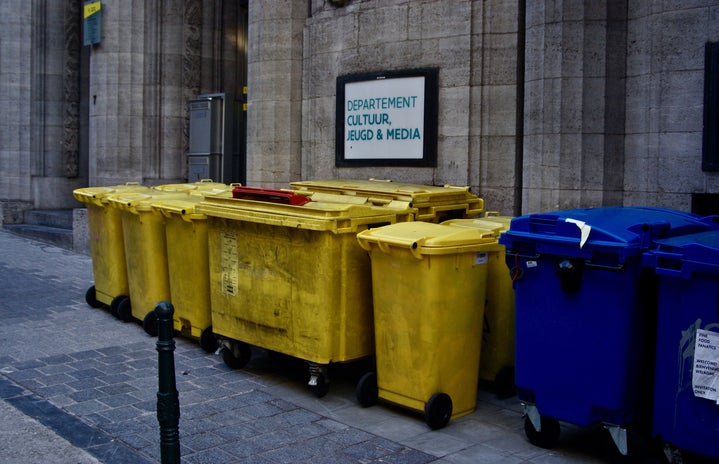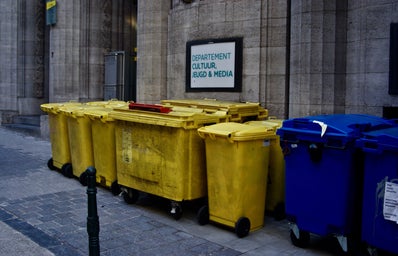We are all familiar with the three green arrows that point towards each other in an attempt to illustrate the waste hierarchy of reducing, reusing and recycling. While there has been a lot of effort to recycle any eligible products, this hasn’t made a significant change for our planet. It seems as though far too many people have forgotten about the first two Rs in the hierarchy. Here’s why recycling isn’t enough and how we can do better to remember all three Rs.
Reduce
Needless to say, the words are not placed randomly, but rather in order of importance. The first word, reduce, has been overlooked as capitalist consumerism plagues our everyday life. A consumerist culture like hauls, mukbangs and other social media trends have increased the wasteful habits of millions of people around the world. The need for more rather than less has contributed to the complete dismissal of the first step to green living. Don’t buy things just for the sake of buying them, really consider if the item is necessary. The reason reduction comes first is because decreasing waste starts with not producing it in the first place. By limiting the number of products purchased, as well as garbage that comes from packaging, greener living can be achieved.
Reuse
The second word focuses on using items over and over, whether it be in the same way or for another function. Finding items that are not single-use is the first step to prolonging their life and repurposing items for other uses. An old t-shirt can be turned into a cleaning rag and instead of purchasing single-use plastic Ziploc bags, glass containers could be an option. Far too long have people thrown out pieces that are in near perfect condition as consumerist culture has them believing that newer is better. This is why the boast of secondhand shops and thrift stores has aided in repopularizing the practice of reusing. Almost anything can be reused and it is this mentality that will make a sincere difference in greener living.
Recycle
The final word is where it should be, as it is the final resort. If you can’t reduce and you can’t reuse, the last resort is to recycle. The problem is that people have come to believe that recycling is the only option, without paying close attention to the entire waste hierarchy. Even when it comes to recycling there are several misconceptions about what can be recycled and what can’t. It’s important to review the recycling and sorting guide of your region/municipality before tossing things into the recycling bin. When things are not properly sorted they are automatically pushed to the garbage ending up in landfills or worse, waters. About 91 percent of plastic is not recycled, proving that recycling should not be the first course of action, but rather the last. If the decision is to recycle, however, it must be done properly.
As the amount of garbage in oceans increases at alarming rates and landfills explode at the brim with waste, everyone must take the measures necessary to prevent our earth from being overtaken by litter. The first step is to reduce. If that is not possible, reusing is the best option and if neither of those are feasible then recycling is the way to go. It is important to carefully consider each part of the waste hierarchy while making the best decision possible for the planet. Let this be a reminder of what needs to be done and how it must be done, we’ve wasted too much already.


